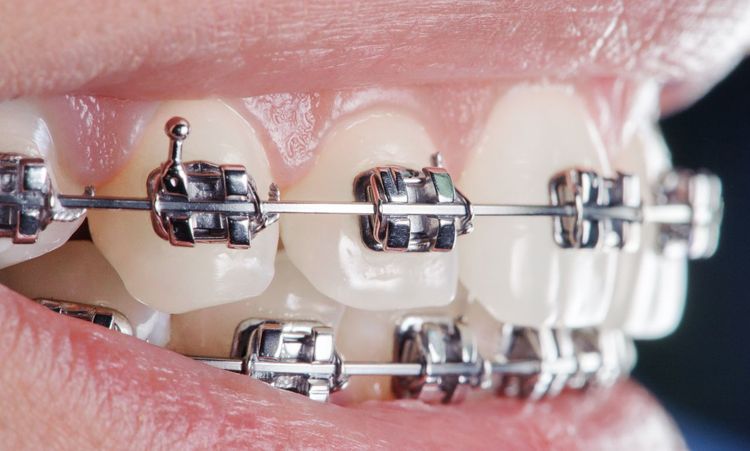You’re in the middle of orthodontic treatment, smiling in the mirror as your braces slowly sculpt the smile you’ve always dreamed of. But what happens if you lose insurance during braces? Losing your insurance midway can feel like an unexpected curveball in this journey, leaving you unsure of what comes next and how to keep your orthodontic care on track.
This article will explore the ins and outs of what to do if you lose insurance coverage during your orthodontic treatment. We’ll go beyond the usual advice to offer you practical tips, financing options, and solutions to keep your treatment on track—without letting the loss of insurance dampen your smile journey.
Implications of Losing Insurance
Losing insurance during braces can have immediate effects, both on your wallet and your treatment continuity. If you lose coverage, you may face the risk of interrupted care, which could extend your treatment time and possibly affect your results. Without insurance, the cost of braces becomes a heavy burden for many, making it necessary to quickly seek alternatives to maintain the desired progress. But there's more to it than just worrying about the cost—understanding how losing insurance can affect your entire treatment process is key.
Differences Between Dental and Orthodontic Coverage

A key part of understanding your situation involves differentiating between dental and orthodontic coverage. Dental insurance generally covers preventive care, such as cleanings, exams, and fillings. Orthodontic coverage, on the other hand, is specifically for treatments like braces and aligners. These policies often have a lifetime maximum amount, which means there's a cap on what the insurance company will pay throughout the course of treatment.
When you lose your orthodontic insurance, you might still have dental coverage, but it likely won’t assist with ongoing braces treatment. Understanding this distinction helps you evaluate what you still have access to and which gaps in coverage need to be addressed.
Importance of Lifetime Maximums and Age Limits
Most orthodontic insurance plans have a lifetime maximum—a limit to the total amount the plan will pay for orthodontic care. Once you reach this cap, any additional expenses are out of pocket. Losing your insurance could mean that you’re on the hook for the remainder of the cost, especially if your treatment is only partly covered.
Additionally, orthodontic coverage sometimes has age limits, which means it’s typically geared towards younger patients. If you are an adult undergoing treatment and lose coverage, you may need to carefully evaluate options that fit your unique circumstances. If you’re close to maxing out your coverage or falling out of an age bracket, losing your insurance might make your treatment significantly more expensive than anticipated.
Treatment Continuity Concerns
Orthodontic treatment is a continuous process, which means any interruptions can have significant repercussions. Losing insurance coverage might lead to treatment pauses, affecting your progress and causing more discomfort. Treatment continuity is crucial because braces gradually move teeth into their ideal positions, and any interruption may allow your teeth to move back or delay their intended progress.
In some cases, orthodontists may suggest temporary options to maintain progress until you sort out new payment methods. However, this can lead to added complexity, as managing treatment in phases without comprehensive insurance can create complications in the long run.
Impact on Ongoing Treatment
Losing your insurance while having braces can lead to various challenges impacting your treatment timeline. First and foremost, ongoing treatment might be delayed due to financial constraints. Many orthodontists understand the predicament and may offer temporary plans or paused schedules, but you need to be aware of potential setbacks that could occur.
Discontinuing treatment because of financial problems can make future treatment more complex and potentially more expensive, as the initial progress can be partially lost. To prevent any relapse in progress, maintaining communication with your orthodontist is vital, and exploring alternative financial strategies is often your best option.
Potential Delays in Care
When you lose insurance coverage, the financial pressure can lead to delays in receiving care, especially if you are unsure of the next steps. Treatment delays are not just inconvenient but could cause a negative impact on your orthodontic health. Your orthodontist’s advice will be key in preventing or minimizing the potential risks associated with a delay.
Temporary solutions like having a retainer or other forms of maintenance can be employed while seeking ways to afford continued care, but it is crucial to prevent long interruptions if possible. The longer the delay, the more complex your treatment could become, which may also lead to increased costs in the future.
What to Do If You Switch Insurance Providers

If you need to switch insurance providers after losing your initial coverage, there are several considerations to keep in mind to ensure your braces treatment isn’t adversely affected.
Understand Your New Plan
Not all insurance plans offer the same level of orthodontic coverage. Understanding your new insurance plan thoroughly is essential in preventing surprises down the road. For example, some plans may only cover orthodontic treatment if you haven't started treatment yet, which means switching plans mid-treatment might result in denial of benefits.
Take the time to review your new plan’s details and ask specific questions. Make sure to clarify the waiting periods, coverage caps, and any restrictions that may apply to ongoing treatment. Additionally, you may want to ask if the orthodontist you are currently seeing is in-network for the new plan or if you will need to switch providers.
Coverage for Ongoing Treatments
Some insurance companies allow transferring orthodontic coverage, meaning they may pick up the remaining costs for ongoing treatments when you switch providers. If you lose insurance but manage to acquire a new policy, you need to ask if your braces treatment will still be covered, and if so, to what extent. This is known as “continuity of coverage” and can be a lifesaver in mitigating extra costs.
Every plan has its nuances, and orthodontic coverage is one of the more complex aspects of health insurance, so asking all the right questions during the transition can make all the difference.
Options for Patients Without Insurance
If you lose insurance and find yourself without any coverage, it’s important to remember that there are still ways to complete your orthodontic treatment. The good news is that many orthodontists offer a variety of financing options to help keep the cost manageable.
Affordable Payment Plans
Many orthodontists understand the financial burden of braces without insurance, and they offer affordable payment plans to ensure patients can continue with their treatment. Payment plans can break down the cost of treatment into smaller monthly payments, making it easier to continue despite the loss of coverage.
It’s important to have a conversation with your orthodontist about the payment plans they offer and any interest rates or fees involved. Some offices even offer in-house financing, which can be more flexible compared to third-party financing.
Financing Options Available
Another common solution for those who have lost insurance is to explore financing options. Third-party financing companies specialize in healthcare expenses, including orthodontics. Popular options include CareCredit and other medical credit cards that allow you to spread payments over time. However, it’s crucial to understand the interest rates and terms involved to avoid falling into a financial trap.
Certain healthcare credit companies may offer deferred interest for a specific period. This option might help you continue treatment until you can arrange new coverage or an alternate method of payment.
Coordinating Multiple Insurance Plans
For patients fortunate enough to have access to multiple insurance plans—such as through a spouse or secondary employer policy—coordinating benefits can help cover orthodontic costs after losing primary insurance.
Benefits of Having Dual Coverage
Dual insurance coverage can be advantageous in reducing out-of-pocket expenses, as secondary insurance may cover costs that primary insurance doesn’t. If you lose your primary insurance, switching the secondary plan into the primary role may help you retain orthodontic benefits and continue your braces treatment.
Make sure to inform both insurance providers about your treatment to ensure smooth coordination of benefits. The orthodontist’s billing office may also assist you in coordinating coverage effectively.
Challenges in Coordination
Managing two insurance plans can get complex, especially when it comes to knowing which plan will pay first, what percentage each will cover, and which services are covered. Communication between your orthodontist and the insurance providers is crucial for successful coordination and to prevent any misunderstandings that could lead to denied claims.
Low-Cost Alternatives for Orthodontic Care
When insurance coverage is lost, exploring low-cost alternatives may be necessary to continue treatment without interruption. Consider options such as community dental clinics, dental schools, or non-profit organizations. Dental schools, in particular, can provide treatment at a reduced cost, as procedures are performed by students under professional supervision.
Non-profits may also offer assistance for low-income families seeking orthodontic care, making it possible to get financial support during difficult times.
Verifying Your Coverage Before Treatment
If you’re just beginning your orthodontic journey, verifying your insurance coverage before treatment begins is essential to avoid surprises down the line. You need to ask about waiting periods, lifetime maximums, and what happens if you change insurance plans during treatment.
Understanding the details of your plan, including in-network versus out-of-network providers, ensures you’re prepared and won’t be caught off guard by unexpected costs.
Managing Orthodontic Treatment Without Insurance

Managing braces without insurance isn’t easy, but it’s not impossible either. There are several key strategies to help navigate this situation.
Essential Steps to Take
If you lose your insurance and have braces, the first thing you should do is speak to your orthodontist. Many orthodontists are willing to work with patients who face financial hardships, and they may be able to provide options to help you keep treatment on track.
You should also explore any employer benefits or health savings accounts (HSAs) that could help cover orthodontic expenses. HSAs, for example, allow you to use pre-tax dollars to pay for medical costs, including orthodontics.
Finding Financial Support Resources
Numerous resources exist to provide financial support for healthcare needs, including orthodontic care. You might qualify for state or local assistance programs that can help cover costs, particularly if your income has decreased alongside losing insurance.
Community programs or local charitable organizations sometimes offer grants or interest-free loans for healthcare needs. Your orthodontist may be able to guide you toward such resources based on your community.
Conclusion
Losing insurance during braces treatment can feel overwhelming, but there are several ways to manage and move forward without compromising your orthodontic journey. By understanding your coverage options, exploring payment plans and financing, and working with your orthodontist, you can maintain continuity of care and avoid treatment delays. With the right strategies, you can overcome this obstacle and keep working toward that perfect smile.




